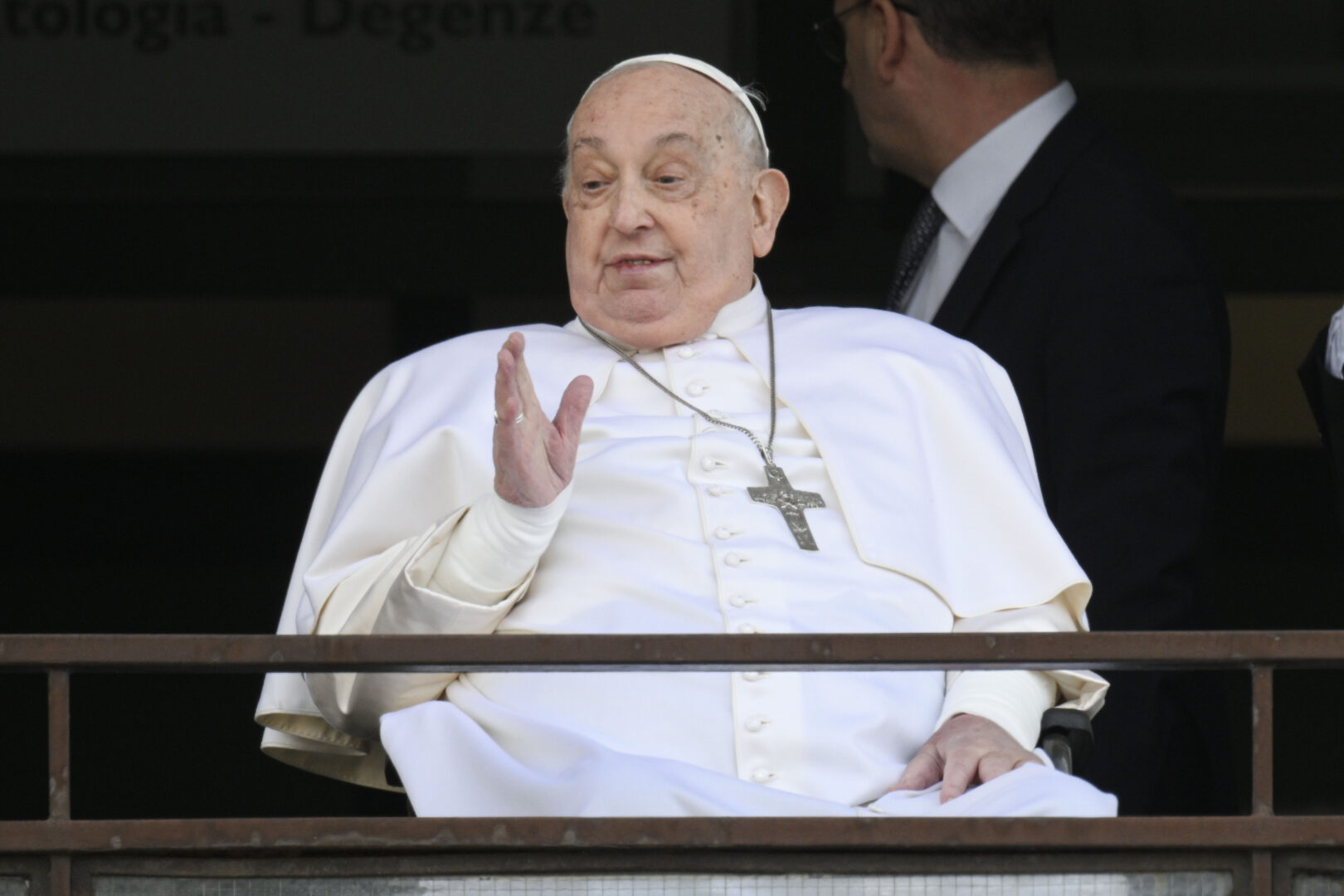ROME (ITALPRESS) – Suddenly, on the afternoon of Feb. 28, the condition of Pope Francis, who has been hospitalized at Gemelli Hospital for 14 days, worsens; he has bronchospasm, air hunger. He calls for help. That was the worst moment. “Yes, the worst. For the first time I saw tears in the eyes of some people around him. People who, I understood in this hospitalization period, sincerely love him, like a father. We were all aware that the situation had deteriorated further and there was a risk that he might not make it.” Thus, in an interview with Corriere della Sera, Sergio Alfieri, the coordinator of the medical team that treated Pope. A professor of general surgery at the Catholic University of the Sacred Heart, he is head of the Complex Operative Unit of Digestive Surgery at the Gemelli Polyclinic in Rome.
“We had to choose whether to stop and let him go or to force and try all possible drugs and therapies, running the very high risk of damaging other organs. And in the end we took this path,” the doctor recalls, stressing that “the Holy Father always decides. He delegated all kinds of health care choices to Massimiliano Strappetti, his personal health care assistant who knows perfectly well the Pontiff’s wishes.” “Try everything, we don’t give up,” he said “That’s what we all thought too. And no one gave up.”
The day after the Pope’s return to Santa Marta, Professor Sergio Alfieri is back at work at Gemelli. During these 38 days of hospitalization, he has always been at his side, also taking care of communications between the inside and the outside: “A team effort with many of my colleagues, this I would like to say and emphasize,” he declares. And when asked if Pope Francis understood that he was in danger of dying, he replies, “Yes, also because he was always vigilant. Even when his condition worsened he was fully conscious. That night was terrible; he knew, as we did, that he might not make it through the night. We saw the man in pain. He, however, from the first day asked us to tell him the truth and wanted us to tell the truth about his condition.”
“We,” he explains, “communicated to the secretaries the medical part and they added the other information which the Pope then approved, nothing was ever changed or omitted. He has people who are now like family members, they are with him all the time.” “For days,” the professor adds, “we risked kidney and marrow damage but we went on, then the organism responded to treatment and the lung infection subsided.
However, there was another crisis. “We were coming out of the hardest period, while eating Pope Francis regurgitated and inhaled. It was the second really critical moment because in these cases-if not promptly rescued-you risk sudden death in addition to complications in the lungs, which were already the most compromised organs. It was terrible, we really thought we wouldn’t make it,” Sergio Alfieri recalls again, adding, “He was always aware of everything but I think his awareness was also the reason that kept him alive instead.”
“In the past,” he says, “when we talked, I asked him how he keeps up this pace, and he always said, ‘I have method and regulation.’ Beyond a very strong heart, he has incredible resources. I think the fact that the whole world was praying for him also contributed to that.” “There is a scientific publication that says that prayers give strength to the sick person, in this case the whole world was praying,” he adds. “I can say that twice the situation was lost and then it happened like a miracle. Of course, he was a very cooperative patient. He underwent all the treatments without ever complaining.”
Going back to Feb. 14, “He had been sick for days, but he was holding out because he probably wanted to fulfill his Jubilee commitments,” the professor explains. “When he began to breathe more and more laboriously, he realized that he could wait no longer. He arrived at Gemelli in a lot of pain, but maybe even a little upset. In a few hours, however, he regained his good mood.”
“As soon as he began to feel better, he asked to go around the ward,” Sergio Alfieri recounts further. “We asked him if he wanted us to close the inpatients’ rooms, but he instead sought the gaze of other patients. He moved with the wheelchair, one day he left the room five times, maybe even more. And then there was the pizza night. He gave money to one of the staff and offered pizza to those who had assisted him that day. It was a continuous improvement and I knew he had decided to return to Santa Marta when, one morning, he said, ‘I’m still alive, when are we going home?’ The next day he looked out the window, reached for the microphone and addressed the lady with the yellow flowers. To me it seemed like a clear signal to say I’m back and I’m in my right mind.”
Asked if the Pope knew that many believed he was dead, he replies, “Yes, he was always informed of what was happening and always reacted with his usual irony.” “Certainly at this stage,” he adds, “he has prescriptions that he should observe, such as avoiding contact with groups of people or with children who can be vehicles for new infections. When he left we talked to each other and promised not to waste the effort made. However, he is the Pope, we are not the ones who can dictate behavior.” And finally the strongest emotion, “when I saw him leave the room on the 10th floor of Gemelli dressed in white. It is the emotion of seeing the man become Pope again.”
– IPA Agency photo –
(ITALPRESS)

